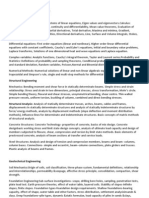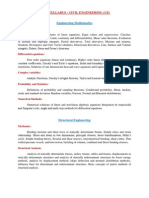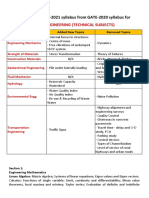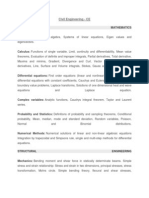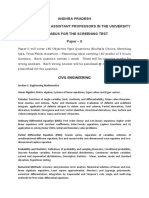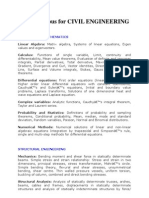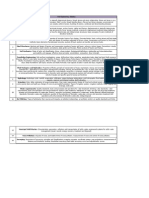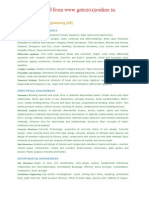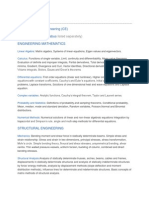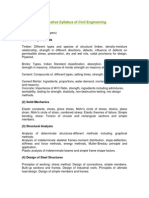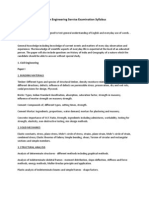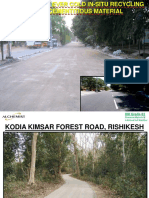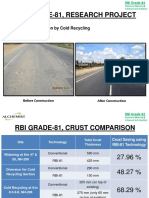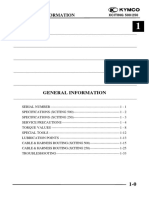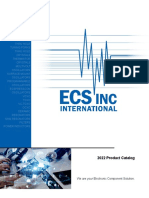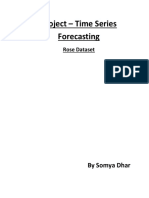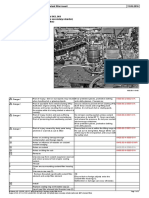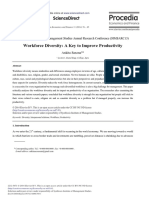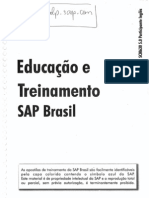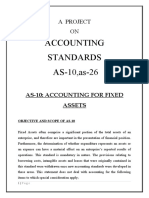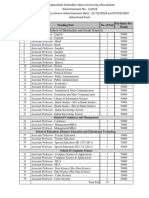0% found this document useful (0 votes)
109 views6 pagesiPATE Syllabus
The document provides an overview of the key topics covered in a construction engineering program, including:
1) Engineering mechanics, solid mechanics, structural analysis, construction materials and management, concrete and steel structures, soil mechanics, and foundation engineering.
2) Fluid mechanics, hydraulics, hydrology, irrigation, water and waste water treatment, air pollution, municipal solid wastes, and transportation engineering.
3) Principles of surveying, errors and adjustments, maps, distance and angle measurement, traversing and triangulation surveys, photogrammetry, remote sensing, and basics of GIS and GPS.
Uploaded by
Amit KumarCopyright
© © All Rights Reserved
We take content rights seriously. If you suspect this is your content, claim it here.
Available Formats
Download as PDF, TXT or read online on Scribd
0% found this document useful (0 votes)
109 views6 pagesiPATE Syllabus
The document provides an overview of the key topics covered in a construction engineering program, including:
1) Engineering mechanics, solid mechanics, structural analysis, construction materials and management, concrete and steel structures, soil mechanics, and foundation engineering.
2) Fluid mechanics, hydraulics, hydrology, irrigation, water and waste water treatment, air pollution, municipal solid wastes, and transportation engineering.
3) Principles of surveying, errors and adjustments, maps, distance and angle measurement, traversing and triangulation surveys, photogrammetry, remote sensing, and basics of GIS and GPS.
Uploaded by
Amit KumarCopyright
© © All Rights Reserved
We take content rights seriously. If you suspect this is your content, claim it here.
Available Formats
Download as PDF, TXT or read online on Scribd
/ 6






